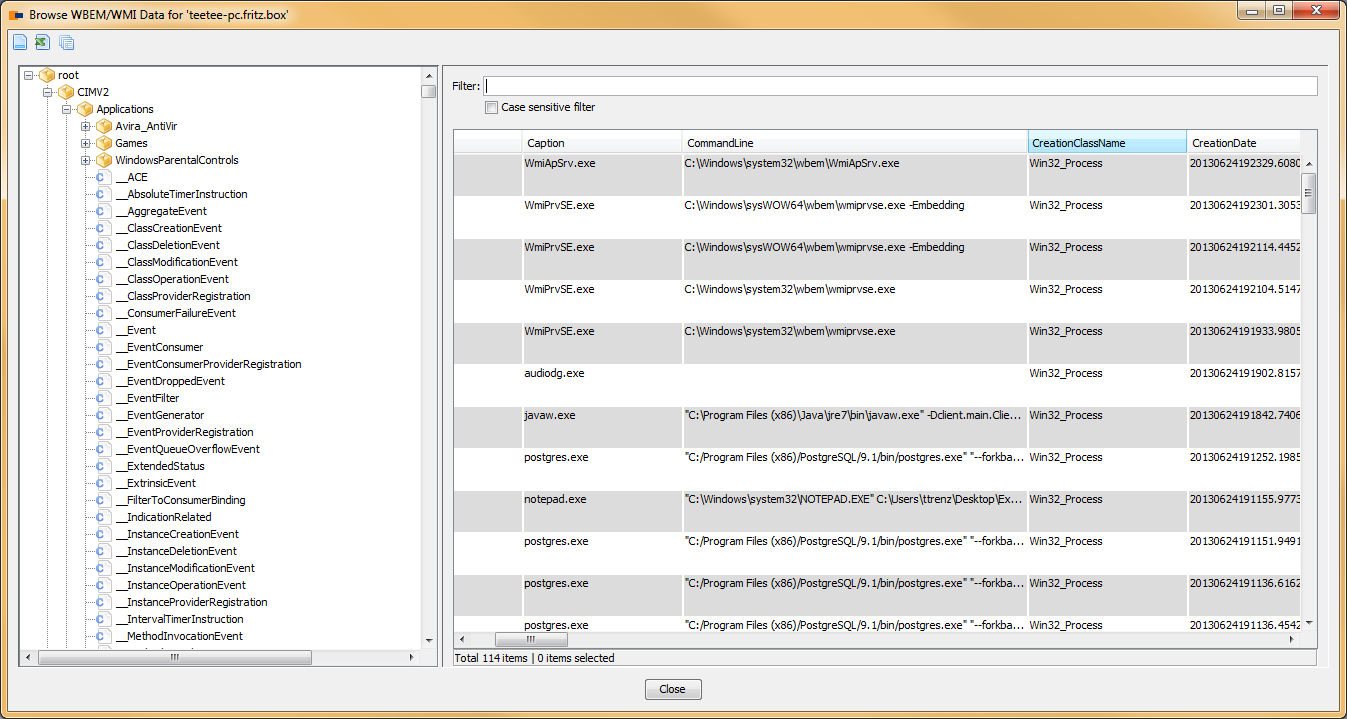WBEM / WMI Browser Preview

 At JDisc, we always provide sneak previews. This time, we look at a feature that will make it into our next major release 3.0.
At JDisc, we always provide sneak previews. This time, we look at a feature that will make it into our next major release 3.0.
Our new WBEM/WMI Browser lets our users easily browse all available WMI information fow Windows computers and WBEM information for Unix computers and VMware Servers.
As you might know, WMI is the main source for most hardware- and software related information. On Unix, the protocol is not that important since we can run system commands from the command line. However on VMware ESX(i) servers, WBEM returns information that is not provided by other protocols (remember that SSH is usually disabled on ESX(i) servers). Microsoft already provides some tools such as wbembrowser.exe or wmic.exe. However, those tools are not easy to use and browsing the WMI information is either impossible or very time consuming.
WMI (when I am talking about WMI, this applies to WBEM) structures its information within namespaces. You can compare namespaces to folders within the file system. Each namespace hosts a set of so called classes. Classes are comparable to classes within object oriented programming. They have a state (properties) and a behaviour (methods) and they can be derived from each other. A class can have any number of instances that hold the actual data.
Our browser (refer to the screenshot below) displays the namespaces together with the classes. As you can see, namespaces are organized in a hierarchical manner. Icons with the “C” indicate classes.
Browse the namespace hierarchy by opening child namespaces. Once you open a namespace, JDisc Discovery will immediately query the list of classes that belong to the namespace. Select a class in order to list all instances. The example above lists all instances of the WMI class “Win32_Process” within the “root/cimv2” namespace.
As usual, use the toolbar to export the instances to a CSV or Excel file. A special export button lets you export the instances for all classes within a namespace or even the complete hierarchy (including child namespaces).
You might ask yourself: “Browsing this information is pretty neat feature, but what’s the benefit for me?”. Besides the direct benefit of browsing current WMI information, the export feature help JDisc to implement new features. In many cases, we rely on our customers in order to implement new features. We cannot add all kind of devices from every vendor to our test network (would be pretty expensive :-). For currently unsupported SNMP based devices, we rely on the SNMP walk that we can import into a SNMP simulation tool. Most of the relevant data resides within “private” MIBs (spaces, where each vendor stores its information in a unique format). Therefore, we need to implement the device discovery based on the SNMP walk information and the simulation. For WMI (and WBEM), the situation is similar. Besides the “standard” namespaces such as “root/CIMv2”, there are many vendor specific namespaces that hold dedicated information for vendor specific hardware. Exporting this information makes it accessible to us and we can implement the discovery support for the hardware.
We hope that you will like this new feature and we are looking forward to receive feedback!

